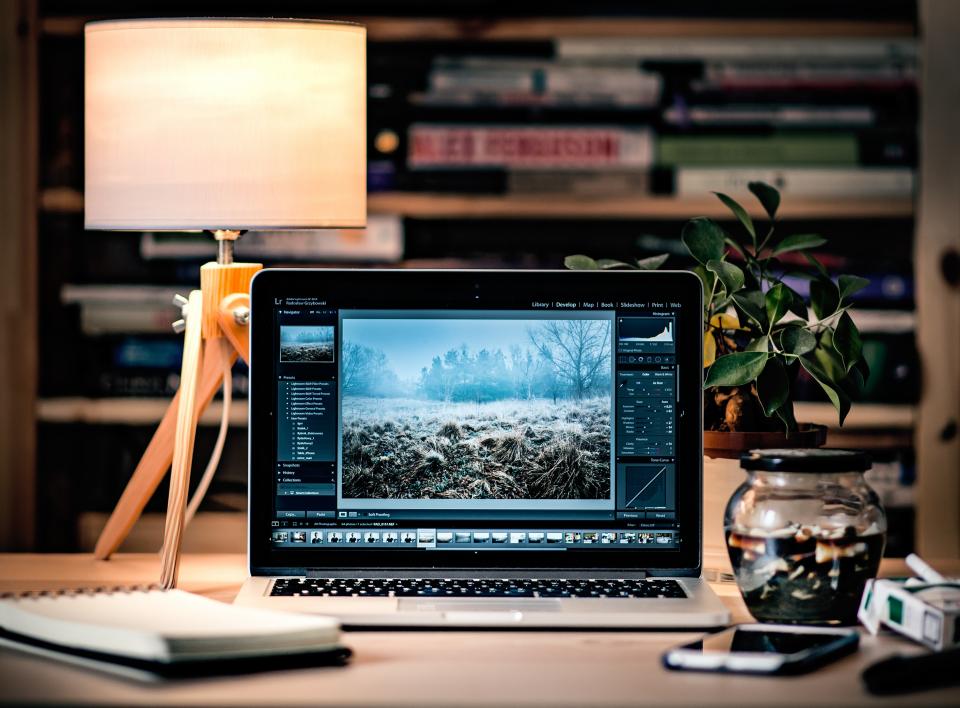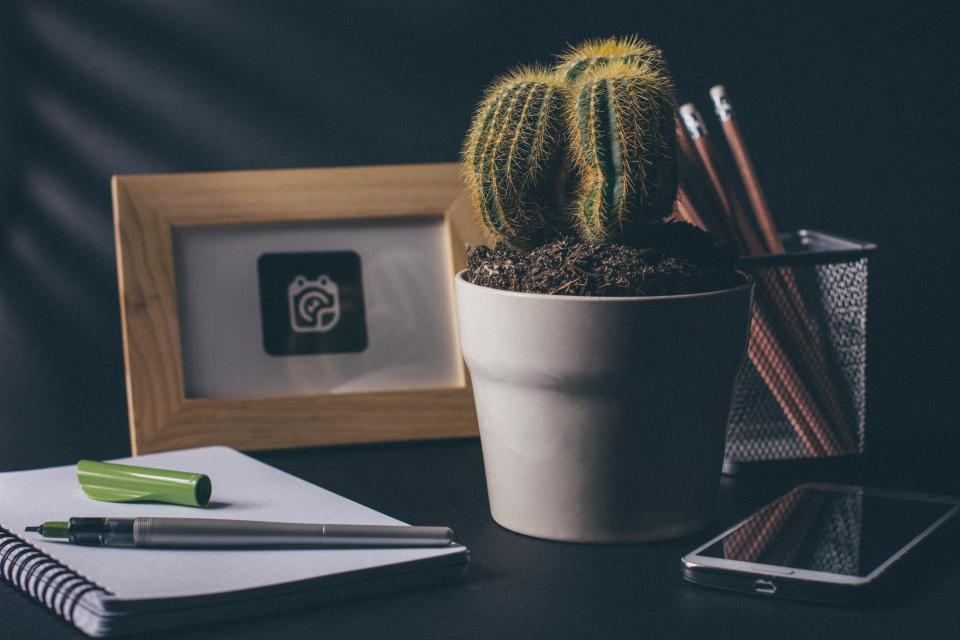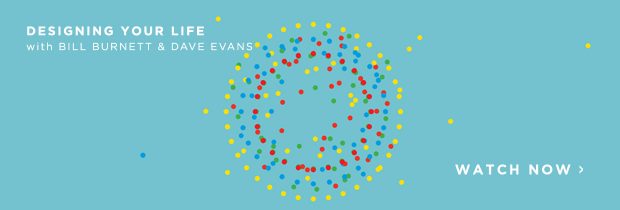
Thinking about making the leap from a full-time job with a steady income and benefits to running your own creative business?
While it’s thrilling to think you could be making good money as you share your passion with the world, and have no boss to report to but yourself, how exactly are you supposed to get there from where you are today?
Well, one of the most important things to realize is that every creative’s employee to entrepreneur story is different and has its own twists and turns. And yours will be different too.
But for some serious inspiration as you head down your own entrepreneurial path, here are the stories of four very different creative individuals—a photographer, a graphic designer, a papermaker and a freelance writer who persisted through various challenges to make their creative business a reality and to take charge of their own lives.
1. Crafter: Jennifer J. Woodward, co-founder of Pulp & Deckle paper-making.
Now or Never
When my husband and I moved to Portland, I was bitten by the self-employment bug in a big way.
There’s a wonderful sense of entrepreneurship here with a lot of small businesses. As an artist with an extensive education background in the arts, I was frustrated that my day jobs were only tangentially related to what I felt like I was really good at–teaching and making. I tried to think of my day job as supporting my artistic career but found that it was just not gelling.
I realized that if I wanted my career track to change, the best way to make it happen was for me to take charge. I looked at what the community was lacking, what I could offer, and found a place where those things intersected. My husband and I started a handmade paper-making studio where we teach workshops, make custom orders, do demos at festivals and sell our wares online. There aren’t any other public paper-making studios in the Portland Metro area where people can have access to the equipment whether they are working on a one-off project, or are artists who want to explore the art form in depth but don’t have the space or money to have their own paper-making equipment.
Money Talk

For 1.5 years, I juggled starting the business with my husband and working my full-time HR job. I stayed at my day job because it provided us with a financial cushion while we got the business going. After about a year, I realized I couldn’t grow our business while staying at my day job. It was also taking a toll on my mental health, as I didn’t have enough downtime to take care of things in my personal life.
So I decided that I would leave my day job, and if money became tight (which it unfortunately did), I could pick up some part-time work down the line. Eventually, I started to work 2 days a week as a production handmade papermaker at a local Portland business. Though this takes me away from my business, it’s related to what I do and helps me hone my craft. My studio is still pretty young (3.5 years in operation), and we are still in the growth and discovery phase. As more clients learn about us, I think our finances will even out and be more predictable.
Lessons Learned
• If you are unhappy with your full-time work, you owe it to yourself to find a different way to live. There are no easy answers. Focus on your wins. Learn from your failures and move on so you don’t get bogged down with self-doubt. It probably won’t be easy, and there will be many sacrifices, but if you’re honest with yourself about what you are willing to do to change gears and work for yourself, then you will be able to make a go of it.
• Map out a plan for where you want to be in 1, 2, and 5 years. This plan can be as pie in the sky or realistic as you want it to be. If you know where you want to end up, you can start making moves to get there. I started out with a list of all the different types of businesses I could imagine launching, thought about the realities of each one, and crossed off ideas that I couldn’t imagine moving towards in a realistic way. You have to be really passionate about what you’re going to do so that you’ll stick with it through thick and thin.
• There is no right way to transition. Every person and situation is unique, so don’t beat yourself up if you think you should be doing things faster or slower than you are.
In the End
Sometimes I have to step away from my business and take time off. I’m tempted to constantly check my emails and social media, but know that if I don’t step away, everything suffers. If I work on the weekends (which I often do), I try and take some time off during the week. It’s not always possible, but if I’m starting to feel resentful about having to work, I know it’s time to take a breather.

2. Photographer: Jenny Siegwart, co-founder of Found Creative Studio.
Now or Never
I met my business partner, Becca Batista, while working part-time at a photography studio in San Diego. About 6 months into working together, we decided to start our own gig.
It happened to work out that a small office space had opened up nearby, and it seemed like the right time to just jump head first and go for it. We leased the space, thought of a name, and boom–business time. About 6 months after we started Found Creative Studio, the company we were working for decided to close its doors. That was huge in helping facilitate business for us, because we basically absorbed a lot of their clients.
Money Talk
Having a part-time job that pays $10 an hour in San Diego is hardly a secure job from a financial standpoint. I had the business sense already from managing the other studio. It was now or never, and worst case scenario, if it didn’t work, I’d move home.
I’d say overall the transition to working at the other studio to full-time at our own business was about a year, and about 8 months of that I was pulling double duty. Working at the studio and then retouching at night for our FCS clients, emailing, client management, etc. Sometimes I would bail out of work early to shoot. We had a cool boss so she understood. We’ve been in business since 2011, and for a full self-sustaining transition, it’s taken 4 years.
Lessons Learned
• If you don’t try, you’re failing anyways, so you might as well try. That goes for owning a business and for any new projects you might be scared to take on. Just try. You never know. But some people are made for a 9-5 and some people aren’t. Test the waters first, don’t just say peace and leave your job without having a plan.
• Start shooting in your free time and decide if that’s something you are capable of handling. Can you handle the deadlines, the communication, the competition, the constant demand to be available?
• Any kind of shooting, no matter what, makes you a better shooter. It’s shocking how much better I’ve gotten at my craft by shooting weddings, and I always swore I never would do that.
• Communicate with your clients, partners, everyone. If you’re going to be late on a deadline and you know a week out, tell them. People never like to be blindsided—it’s better to be as open and honest as possible.
• Don’t let the facade of social media deter you from what you are trying to accomplish. It’s so easy to fall into a comparison game, especially now with the amount of imagery that is thrown around the internet. Just stay focused on your goal, and try not to compare where people are at. Remember that everything you see is a curated version of what those people are trying to portray.
In the End
No complaints. We work 24 hours a day, 7 days a week, but it’s worth it when you get to call the shots and take last minute trips. This year, we were talking about how we have finally made it (as in having a self-sustaining business), so it’s time to refocus our energy into personal projects and different goals. Our goals have always been to pay the bills, so it’s nice to be able to shift that into something more meaningful.
3. Freelance Writer: Sarah Zielinski, science writer and editor.
Now or Never
About 7-8 years into my science writing career, while an editor at Smithsonian magazine, I started thinking seriously about freelancing and began laying the groundwork for such a switch. I had some not-so-great bosses and wanted to direct myself. Plus, after missing out on an amazing opportunity to go to Hawaii because I felt like I couldn’t take time off from my job, I wanted to be able to say ‘yes’ when something like that came up again.
Money Talk
The decision was made for me; I got laid off. But that was a good thing because I got a severance package that served as a nice safety net starting out. I had money to pay bills, and the layoff was public, so people were ready to help with leads and assignments.
Lessons Learned
• Organization is an absolute must if you’re juggling clients and assignments. Plus, it makes tax time so much less of a hassle.
• I knew I’d be fine working on my own from home with only a kitty coworker. But I can see how a more social, extroverted person would be driven crazy by this lifestyle. And it’s important for even an introvert to find ways to connect with people on a regular basis.
• Lay groundwork for the switch long before you make it. Network. Research the boring bits like accounting and health insurance. Get everything together that you need to run your business, from work space and computers to leads on where to find work.
• If you don’t have at least a few months’ worth of savings, think seriously before quitting your job to start a freelance business. Between finding work, getting enough work and waiting on payments, it could be awhile before you see money coming in. You will spend more time tracking down work than you think you will, especially starting out. Factor that into your plan.
In the End

Overall, I enjoy what I do, but I sometimes feel that I end up working way too hard. I have a hard time saying ‘no’ when offered a well-paying gig, and because of that I sometimes end up working really crazy-long hours, with no weekends off. I’m still struggling for work-life balance.
Freelancing isn’t for everyone. If you need a supervisor to kick your butt to make sure you get your work done, this may not work for you. And if you can’t hack it as a freelancer or small business owner, you’re not a failure. This life isn’t for everyone.
4. Graphic Designer: Thekla Leinemann.
Now or Never
For four years after graduation, I worked full-time as a cartographer for different German geological projects. But I always wanted to work in something more creative.
I needed the challenge, more adventure, more opportunities and wanted to work for different industries. I eventually applied for a full-time job at a printing agency, but I left the firm after 3 months due to major disagreements with the management. After that, I decided to take the leap and just try my luck as a freelance graphic designer.
Money Talk
Since advertising agencies in Germany rejected my services as a freelancer because I didn’t have a graphic design degree (back then, this was the case), I worked for little print shops.
Once I acquired more skills and had worked as a freelance art director, I was finally able to win large firms as clients and make a small living out of my business.
Lessons Learned
• While I worked on small pre-print and design jobs, I educated myself in different Adobe products like Photoshop, InDesign, etc. After about 6 months as a freelancer for print-shops, I finally was able to secure some small firms as clients.
• I worked hard, developed my skills, and it all paid off when a startup advertising agency booked me as a freelance art director. A little over a year later, we split up, and I started all over again, building up a pool of customers.
In the End
Work was hard and profit was little, but I had reached my goal of being independent. And that´s the most important thing for me: being my own boss.




